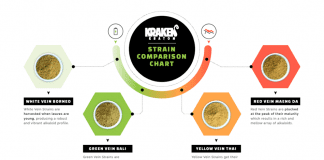Table of Contents
Digital printing has revolutionized the printing industry, offering numerous advantages in today’s competitive market. Understanding the basics of digital printing is crucial in leveraging this technology to its fullest potential. This article explores the advantages of digital printing, its rise in the market, and a comparative analysis with traditional printing methods, backed by case studies of successful digital printing applications.
Understanding Digital Printing
What is Digital Printing?
Digital printing refers to the process of reproducing digital images on various media, such as paper, fabric, or plastic. Unlike traditional printing methods, which rely on plates and rollers, digital printing involves directly transferring the image or text from a computer to the printing press. This method allows for on-demand printing, making it ideal for small-scale or customized projects.
An example of that could be many of the most wanted products such as stickers, name cards, display banners, postcards, and more.
Digital printing has revolutionized the printing industry by offering numerous benefits. One of the key advantages is the ability to produce high-quality prints with exceptional detail and accuracy. The digital printing process ensures that every pixel of the image is faithfully reproduced, resulting in sharp and vibrant prints.
Furthermore, digital printing eliminates the need for costly setup and plate-making processes, making it a cost-effective option for both small and large print runs. With traditional printing methods, businesses had to invest in expensive plates and setup fees, making it economically unfeasible for short print runs. However, digital printing allows for quick and affordable printing, even for small quantities.
The Evolution of Digital Printing
Over the years, digital printing has evolved significantly, catering to the changing demands of the market. Initially, digital printing was limited to simple black-and-white prints, but with technological advancements, it now offers vibrant, full-color prints with exceptional detail and accuracy. From large-format prints to personalized marketing materials, digital printing has become the go-to choice for businesses across various industries.
One of the major advancements in digital printing technology is the introduction of variable data printing. This feature allows businesses to personalize each printed piece with unique information, such as names, addresses, or even images. Variable data printing has revolutionized direct marketing campaigns, enabling businesses to create highly targeted and personalized materials that resonate with their audience.
Moreover, digital printing has also made significant strides in terms of print speed and efficiency. With the latest digital printing presses, businesses can now achieve high-speed printing without compromising on quality. This has opened up new possibilities for time-sensitive projects and tight deadlines, allowing businesses to meet their printing needs promptly.
Additionally, digital printing offers a wide range of substrates and finishes to choose from. Whether it’s glossy paper for vibrant photographs, textured paper for elegant invitations, or vinyl for durable outdoor banners, digital printing can accommodate various media types. This versatility has made digital printing the preferred choice for businesses looking to create eye-catching and impactful prints.
In conclusion, digital printing has transformed the printing industry, offering numerous advantages over traditional printing methods. From its ability to produce high-quality prints with exceptional detail to its cost-effectiveness and versatility, digital printing has become an essential tool for businesses of all sizes. As technology continues to advance, we can expect further innovations in digital printing, opening up new possibilities for the future of print.
The Rise of Digital Printing in the Market
Market Trends Favoring Digital Printing
The market trends have shifted towards digital printing due to its numerous advantages. The rise of e-commerce and online marketing has led to an increased demand for shorter print runs and quicker turnaround times. Digital printing enables businesses to meet these demands efficiently, reducing costs associated with excess inventory.
The Role of Technology in Digital Printing Growth
Technological advancements have played a pivotal role in the growth of digital printing. High-speed printers, improved inkjet technology, and innovative software have enhanced the speed and quality of digital prints. Additionally, digital printing allows for variable data printing, enabling businesses to personalize each piece of printed material, enhancing customer engagement and response rates.
Key Advantages of Digital Printing
Speed and Efficiency
Digital printing eliminates the need for complex setup processes, resulting in faster turnaround times. With digital printing, businesses can produce prints in minutes, reducing waiting time and increasing overall efficiency. This advantage is particularly beneficial for time-sensitive projects or last-minute marketing campaigns.
Cost-Effectiveness
Digital printing offers cost advantages for small print runs. Traditional printing methods typically have high setup costs, making them more suitable for large print quantities. On the other hand, digital printing allows businesses to print smaller quantities without incurring significant setup expenses, making it more cost-effective for targeted marketing initiatives or product prototypes.
Quality and Precision
Advancements in digital printing technology have significantly improved print quality. Whether it’s sharp text, vibrant colors, or intricate details, digital printing delivers exceptional precision and clarity. Businesses can confidently showcase their brand and product imagery, knowing that digital prints will accurately represent their vision.
Customization and Personalization
Digital printing enables businesses to personalize each printed piece with variable data printing. This level of customization allows for targeted marketing campaigns, where each recipient receives a unique message. Personalization increases customer engagement and response rates, ultimately driving sales and brand loyalty.
Digital Printing vs Traditional Printing
A Comparative Analysis
When comparing digital printing to traditional printing methods, several factors come into play. Traditional printing, such as offset printing, is best suited for bulk printing due to its lower per-unit cost. However, digital printing shines in terms of flexibility, speed, and customization capabilities, making it the preferred choice for short print runs and on-demand printing.
Why Businesses are Shifting to Digital Printing
Businesses are shifting towards digital printing due to the advantages it offers. The ability to print smaller quantities reduces inventory costs and waste associated with printed materials becoming obsolete. Additionally, the speed and efficiency of digital printing enable businesses to meet tight deadlines and quickly adapt to market demands.
Case Studies of Successful Digital Printing Applications
Digital Printing in the Publishing Industry
The publishing industry has benefited greatly from digital printing. Authors and publishers can now print smaller initial quantities, reducing production costs and minimizing the risk of excess inventory. Furthermore, digital printing techniques allow for quick revisions or updates, enabling authors to maintain the accuracy and relevance of their published works.
Digital Printing in the Advertising Sector
Digital printing has transformed the advertising sector by offering targeted and personalized marketing materials. Advertisers can print customized brochures, flyers, and direct mail pieces with variable data printing, tailoring each piece to a specific audience. This level of personalization enhances the effectiveness of advertising campaigns and increases the overall return on investment.
In conclusion, digital printing provides numerous advantages in today’s competitive market. Its speed, cost-effectiveness, quality, and customization capabilities make it a powerful tool for businesses across industries. As technology continues to advance, it is anticipated that digital printing will continue to grow and shape the future of the printing industry.















